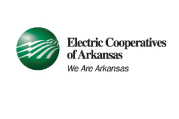Software Audits: Securing a Release of Liability with Settlement

The release of claims and liability section is the most critical provision in the settlement agreement. This provision prevents the auditing entity from pursuing copyright infringement or other claims against a company based on installations that were included in the audit materials and that were covered by the settlement payment. Auditing entities also sometimes attempt to condition a release on compliance with other sections contained in the settlement agreement.
For example, sometimes an auditing entity will condition release on the future compliance with all software license agreements. This language is vague and can subject the company to a substantial penalty (e.g., the loss of the release) based on one inadvertent violation of a license agreement.
It is important to carefully craft language in the release to ensure that a company is not bound forever by a provision in the settlement agreement in order to obtain the release. A company should not allow itself to jeopardize a release years after settlement by unknowingly failing to fully conform to a software license agreement.
If in doubt, a company should consult with an attorney to ensure it is protected from future liability. Additionally, a company must ensure that the conditions to any potential release are able to be met, and the conditions are in fact complete once settlement is resolved. Businesses should consider amending software use and privacy and security policies and protocols to ensure future software compliance.





